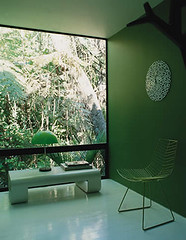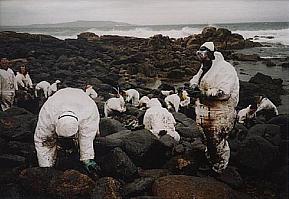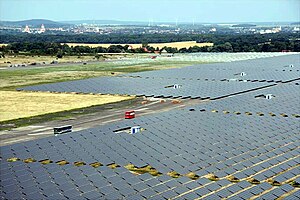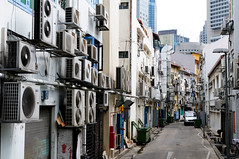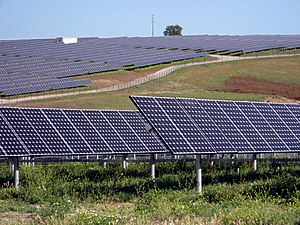 Image via Wikipedia
Image via WikipediaBy
Bruno Korschek
Singer Bill Withers once sang: "Ain't no sunshine when she's gone." Great song and the inspiration, along with a recent Associated Press analysis, for this article, indicating that there is no sunshine and no solar power when the Federal government and the political class that operates it get involved.
According to an Associated Press report that was issued on September 1, 2010, the Federal government, through the U.S. Bureau of Land Management in the Interior Department, operates a first come, first served land leasing program that is supposed to foster the development of solar energy on Federal government lands.
Under this program, companies could submit a plan and pay a fee to develop a solar energy production facility on the Federal land that they wanted to lease. They could control the solar development potential of that land forever even if they did not develop a solar energy capability on that land. Consider the history of the program, according to the AP article:
- In 2005, Congress gave the Interior Department a deadline of finding a way to generate 10,000 megawatts of electricity from renewable energy on public lands by 2015. 10,000 megawatts could power about five million U.S. homes during peak usage hours.
- However, Congress and the Interior Department never properly staffed the program, with the Bush Administration focusing the Interior Department on the development of oil and gas leases.
- As a result, according to the article, the small staff working this program have been overwhelmed by the administration of the program, resulting in companies getting the solar energy rights to Federal land but basically just squatting on the land and not generating any power.
- The staff has given out these land rights to numerous companies without ever discerning whether these companies had viable and workable plans to develop renewable energy on Federal land, with the result being that the most choice and prime sites have already been given out with no facilities being build to take advantage of these sites. According to an Interior Department official: "People were making solar applications on Federal lands not knowing what kind of technology to propose and how to develop the land."
- While the companies holding the rights to the land cannot sell their stake to another company, if the company holding the rights is bought up by another company, those land rights follow to the new company, they do not revert back to government control. Thus, just having paper access to the government land for solar development created wealth in the private sector without benefiting the American taxpayer, when several of these companies holding the land rights were bought out.
- Goldman Sachs, the investment bank, has jumped into the giveaway and one of its subsidiaries has filed 52 of the 354 applications for the rights. Goldman is not stupid. They are not solar power developers, they are investment bankers. The recognize the value of these land stakes and for a minimum amount of money they can tie up valuable real estate assets until it suits them to do something with their claims. Goldman and its subsidiary have filed absolutely no plans for any solar facilities so far.
- Five years after Congress set up the program, there are no working facilities on any of the Federal lands designated for solar power sources. The Obama administration has identified 14 "fast track" projects that it wants to be approved by the end of the year. That is approved, not operational. Making any of these plans operational would take several more years at the earliest, according to the article.
What a disaster. Legitimate solar power developers cannot get access to government lands because start-up and/or incompetent companies and individuals, along with an investment bank, beat them to the Interior Department's bureaucracy, a bureaucracy that handed out rights willynilly with a too small of a staff and too few resources available to properly screen out the best and worst applicants. As a result, the government has managed to gridlock the sun. Unbelievable.
Thus, it could easily be ten years from the time that Congress authorized the program in 2005 to the time we finally get any energy flowing. The incompetence is overwhelming. Wasted time, wasted government taxpayer money spent on administrating a failure of a program, and stranded natural resources sitting in prime solar energy territory.
And probably nobody, either in the Interior Department or those sitting on the Congressional committees responsible for implementing these plans, will face an consequences for this failure. They are all complicit in giving away government and taxpayer assets and getting nothing in return. It is a modern version of highway robbery. As with most every government programs, there are lots of people in charge, from the President (in this case, Bush) to Congress to Interior Department leaders but no one is responsible for this failure of a program. As a result, our dependency on fossil fuels and foreign energy sources continued to grow since 2005 with no progress made to change that trend.
Several steps are desperately needed to help ensure that this type of failure happens less frequently when it comes to government oversight and project management:
- Step 1 would significantly downsize the overall size of the Federal government over a five year period, resulting in fewer but more important projects being undertaken by the Federal government, projects that are hopefully managed better. This focus on fewer but more important programs would force down accountability to lower levels of government. This downsizing would make it clearer who was both in charge and responsible since the red tape and previous bureaucracy would be gone and the hiding places from responsibility would disappear. Failure in this new era of accountability would result in severe career consequences, much like it does in the private sector.
- Step 2 would institute a policy that would remove Congressional members from their committee posts if they and their committee did not fulfill the responsibilities of that committee. This would have resulted in politicians being replaced on the Interior Department committee or subcommittees that should have stayed on top of this solar project to ensure that taxpayer assets were not wasted and stranded and we actually got some solar power benefit form our public lands.
- Step 3 is the most important step. What is needed is the development of a sane, rationale and doable national energy strategy and policy based on fact and reality, not politicians' focus on getting re-elected or satisfying those lobbyists who can get them re-elected. One reason why this solar project on Federal lands program failed is that it is a standalone tactic, it is not a tactic within an overall strategic plan. Develop the overall strategic plan and philosophy and then develop the tactical plan underneath the strategy, complete with deadlines and deliverables. Then you can manage the strategic plan and tactics together, identifying and remedying problems sooner since they pose a risk to attaining the overall strategic goal. It is not hard, companies in the private sector do it all the time to survive. Government rarely does it, usually resulting in failed laws and disappointing outcomes.
Ain't no sunshine when she's gone, ain't no sunshine being turned into cheap, domestic and clean energy when strategic planning is gone and replaced by political class incompetence. Grid locking the sun, who would have thought that possible?
Walter "Bruno" Korschek is the author of the book, "Love My Country, Loathe My Government - Fifty First Steps to restoring Our Freedom and Destroying The American Political Class," which is available at
http://www.loathemygovenrment.blogspot.com and online at Amazon and Barnes & Noble. Our daily dialog on freedom in America can be joined
http://www.loathemygovernment.blogspot.com.
Article Source:
http://EzineArticles.com/?expert=Bruno_Korschek
http://EzineArticles.com/?Aint-No-Sunshine-(And-Solar-Power)-When-The-Political-Class-Gets-Involved&id=4982474
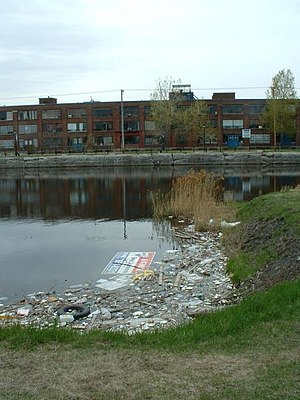 Image via WikipediaBy Sarah Bernheim
Image via WikipediaBy Sarah Bernheim
